NEED TO KNOW
-
Jaclyn Hayes Lin was 32 weeks pregnant when she was diagnosed with stage 4 pancreatic cancer
-
When chemo stopped working after 44 rounds, she became part of a clinical trial for a new medication that has reduced her tumors and prolonged her life
-
She now advocates for pancreatic cancer research at a time when funding is being slashed
The first time Jaclyn Hayes Lin was pregnant, she craved nachos and spicy foods. During her second pregnancy, something felt off: She had no cravings and didn’t even feel hungry. She also wasn’t gaining weight like she did the first time. “My OB said it wasn’t anything to worry about and that every pregnancy is different,” says Lin, now 37, who lives in River Edge, NJ. “But I knew something was very wrong.” She went to the ER three times with excruciating back pain, fever and flu-like symptoms before being diagnosed with stage 4 pancreatic cancer. Lin now volunteers with PanCan (Pancreatic Cancer Action Network), advocating for clinical trials of medications that can help her stay alive for her two daughters. She shares her story with PEOPLE’s Wendy Grossman Kantor.
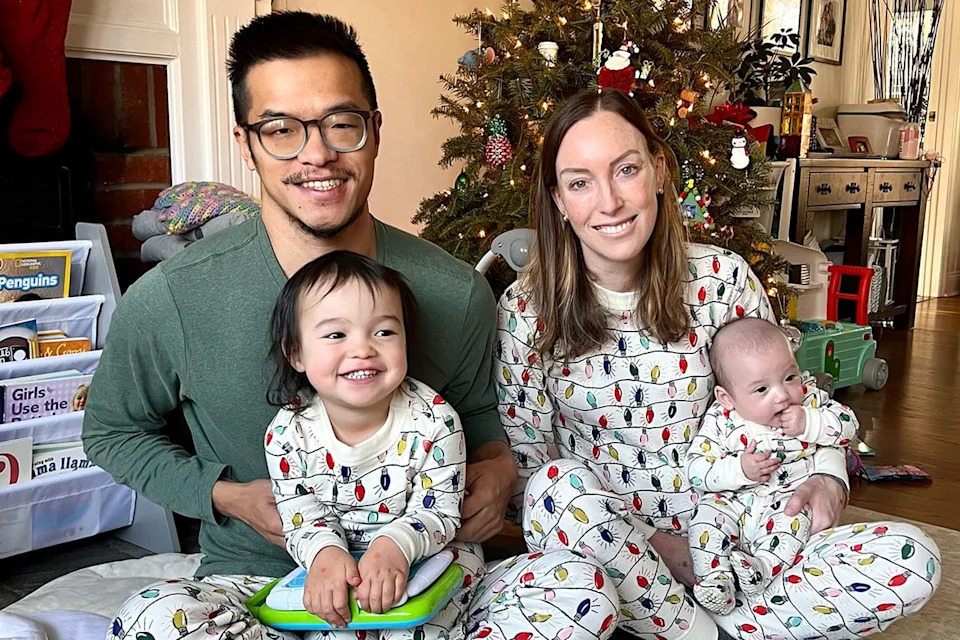
Courtesy of the Lin family
The Lin Family in December 2023
I knew something was really wrong in June 2023. I was about 26 weeks pregnant, in the car with my husband, and I got this bad, sharp pain on the right side of my back. That night, I spiked a fever and had flu-like symptoms. I called my OB/GYN and went to the hospital for observation.
At the hospital, they dismissed my back pain as pregnancy-related, pinched-nerve-type pain. They thought my fever was because of a UTI, so they gave me antibiotics and sent me home.
I was fine the next day. I went back to work as an IT analyst and back to being a mom of a 2-year-old. Then, in mid-July, my fever came back with more flu-like symptoms. I thought, “This is weird, it’s summer, my daughter’s not sick.” I went back to Labor & Delivery for observation. They admitted me, ran some tests, and gave me intravenous antibiotics. They weren’t really sure what was going on, but they sent me home.

Courtesy of the Lin family
James and Jaclyn Lin in August 2025
A month later, I was in the ER again with flu-like symptoms, a high fever, body aches, chills, and debilitating back pain. It was a constant throbbing pain. I couldn’t move.
The next morning, a social worker came to my hospital room and asked if there was anyone who could sit with me. I texted my husband, James Lin, but he was dropping off our toddler at day care.
Before my husband made it to the hospital, a team of doctors came into my room and told me that a CT scan revealed a large mass on my pancreas, and an abdominal ultrasound revealed that the cancer had metastasized to my liver.
I was a deer in headlights. I knew nothing about cancer. Some of my non-immediate family members had had cancer, but nobody had been diagnosed while pregnant. I thank God for my deer-in-the-headlights reaction because otherwise, with my stress and my anxiety levels, I probably would’ve delivered my baby that day.
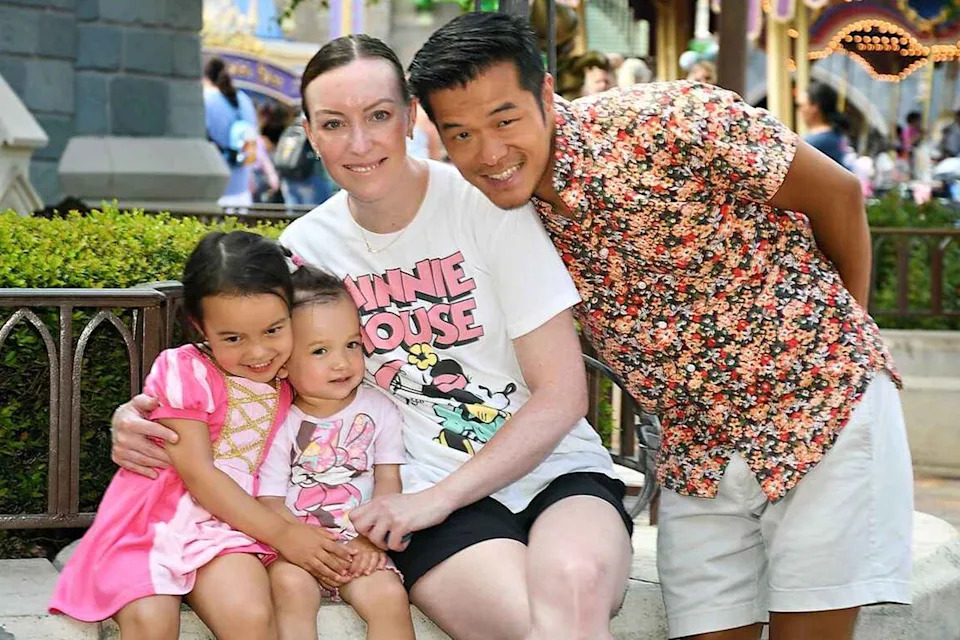
Courtesy of the Lin family
The Lin Family in May 2025
I was in shock. It was devastating. But it did confirm that I wasn’t crazy — my symptoms had been real.
I cry every time I talk about it, but I didn’t cry then, because I didn’t know how to react. I was about 32 weeks pregnant. The hospital told me that I could do the biopsy while I was still pregnant, so the baby could stay in as long as possible. They seemed pretty confident. But when they were prepping me for the biopsy, the anesthesiologist said, “I’m not comfortable doing this. We’re not doing it.”
I decided to switch my oncology care to the hospital where I worked in IT: Robert Wood Johnson Barnabas Health New Brunswick, NJ.
My oncologist consulted with my OB/GYN, and they decided that the best route was to deliver my baby early. She was due September 21, 2023, but they planned to induce me at 37 and a half weeks. But when I arrived for my scheduled induction, she was already ready to come out. They didn’t have to induce; I was already two centimeters dilated. She made it very easy for me.
The birth was literally just a couple of hours. She was ready to come; it was the easiest delivery I could have asked for. She was born on August 23, 2023, weighing 5 lbs., 8 oz.
Giving birth to her was surreal, and my cancer was not on my mind. There was just so much riding on the birth going well, with her being healthy. We were praying for a safe delivery and that she would be healthy and thriving. My biggest concern was her in that moment, and not myself. We knew she would be premature and would have to go to the NICU. But we were just grateful that everything went according to plan. For 72 hours, it was just about my daughter. I was in the zone and knew I had to do a, b and c to get to d, which was chemo to start the healing process. I was just a machine going through the motions.
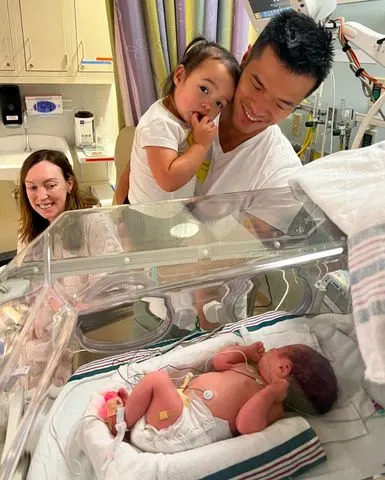
Courtesy of the Lin family
The Lin Family, two days after their youngest daughter was born
Shortly after her birth, a CT scan revealed that my liver was triple the size of a normal liver. That’s why my daughter came early — she had no space; there was no more room inside. (Thankfully, she is a very healthy, rambunctious, fun-loving little girl today.)
They did a liver biopsy four days after I delivered. I wasn’t a surgical candidate because my cancer had metastasized. They knew I had stage 4 pancreatic cancer before the biopsy — they just didn’t know if it was adenocarcinoma or neuroendocrine. The latter is more treatable.
Six days after the biopsy, I ended up in the emergency room with excruciating abdominal and back pain. My oncologist got the results of my biopsy, which showed that I have pancreatic adenocarcinoma, the more aggressive type of pancreatic cancer.

Courtesy of the Lin family
Jaclyn and her youngest in September 2023
They transported me back to Robert Wood Johnson to start my inpatient chemo. I had my first round of chemo on September 2, 2023.
I remember the specific day because it was the anniversary of my mother’s death. My mom died on September 2, 2001. I felt like she was with me, making sure that I was going to stay earthside, because the chemo started working right away.
I was discharged and started outpatient chemo. I had very little interaction with my newborn in the beginning. When I came home from chemo, my port was still connected to a ball of chemo, so I couldn’t really hold her or press her against me. I was so tired and nauseous all the time.
The first several months were very rough. I can’t say enough good things about my husband. When I couldn’t do bath time or bedtime, daddy stepped in. He sat with me through every single chemo visit.

Courtesy of the Lin family
Jaclyn and her oldest daughter
The five-year survival rate for somebody with stage 4 metastatic pancreatic cancer is 3 percent. It’s really hard to hear that number. My husband wasn’t going to accept that, though. He found me the best doctors. At Memorial Sloan Kettering Cancer Center, I had genomic tumor sequencing done, which revealed that I have a rare NRG1 mutation that can be targeted with precision medicine.
My husband found several other NRG1-positive individuals. A bunch of them are also in their 30s with families. This rare mutation seems to impact younger individuals. (It’s also present in lung cancer.)
I quickly learned that if you’re going to be in this for the long haul, you need to look into treatments beyond chemo. Because eventually, it stops working. It stopped working for me after 44 rounds of chemo, less than two years after my diagnosis. I started chemo in September 2023 stopped in May 2025.
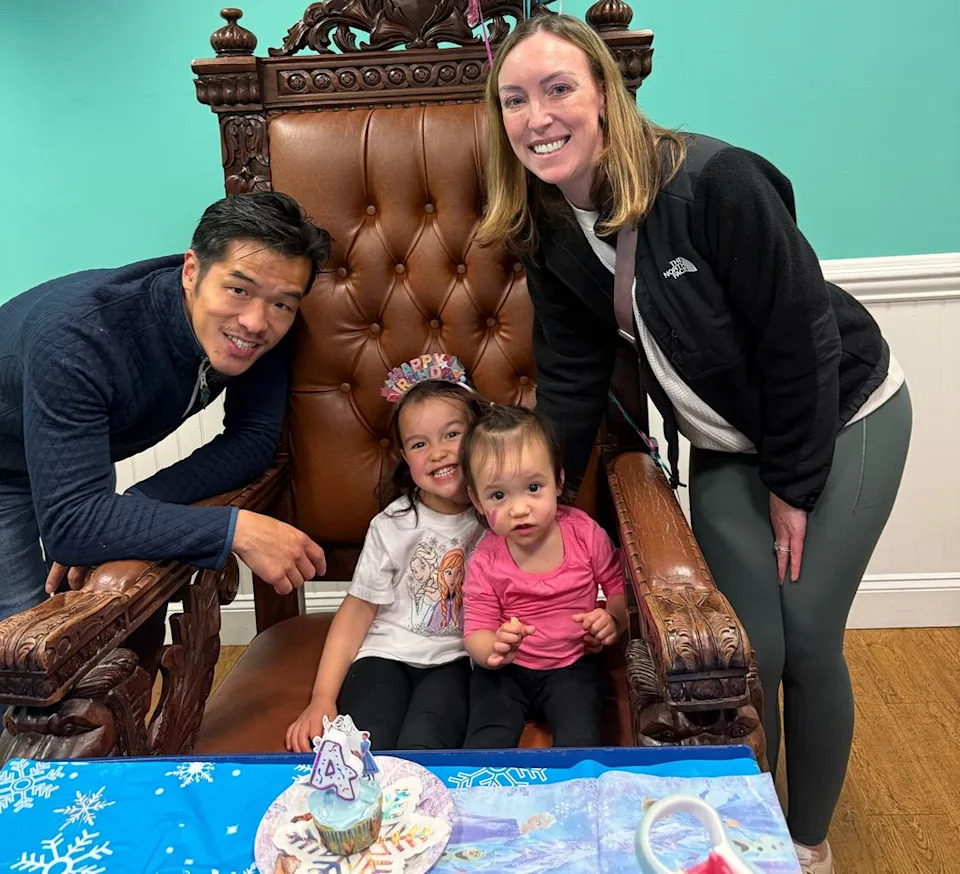
Courtesy of the Lin family
The Lin Family celebrates their oldest daughter’s 4th birthday in April 2025
Then, in June 2025, I started a new medication, BIZENGRI (zenocutuzumab-zbco). It just came out of a clinical trial and was FDA-approved last fall.
This new drug has been a complete 180-degree switch from chemo. I don’t have the nausea. I don’t have the fatigue. It’s just a one-day infusion. I bounce back the next day. I spent the summer with my daughters at the beach and taking them to gymnastics class.
It’s been a blessing to have that second-line treatment beyond chemo. The clinical trial changed my life.
Early on in my cancer journey, I went for a second opinion with a doctor at the University of Pennsylvania. I’ll never forget her advice: Live my life in three-month increments.
Every three months, I have a CT scan. That clinical trial drug is still working. There was a 40 percent tumor reduction at my last scan, and I feel great. I’m not officially in remission, but my doctor is hopeful and says I don’t seem like someone with stage 4 cancer. If the medicine stops working, there are a couple of other drugs we could try, but they’re not typically as effective. Obviously, there’s no cure.
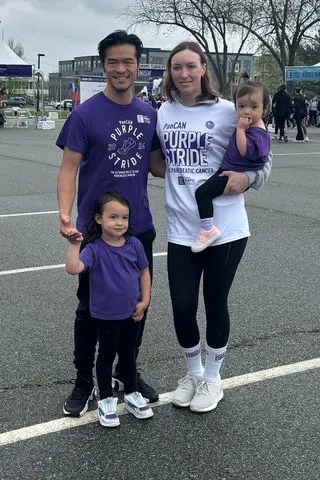
Courtesy of the Lin family
The Lin Family at a PanCan walk in April 2025
In between CT scans, I spend time with my girls, now 4 and 2. I never went back to work. I went from somebody with two master’s degrees and a full-time career to a stay-at-home mom. Re-shifting my purpose to my children has been a lifesaver because if I didn’t have them, I don’t know what my purpose would be. They bring joy when we need it. They’re always smiling or dancing.
I want to be a role model for my daughters. I want to show them that when faced with something difficult, you can persevere. You can overcome. No matter how hard the battle is, you can do it.
I also choose to maintain a positive outlook because it’s best for my health, and it’s best for my daughters to see. They don’t deserve a mommy who’s sick.
The mantra we live by is scheduling joy. While my calendar is full of countless appointments for cancer, we make sure to schedule joy in between, whether that’s a trip to Disney, a trip to the beach, or just a night in playing blocks.

Courtesy of the Lin family
The Lin Family in July 2025
I know what it’s like to lose your mother as a young girl. I was 13. That’s always in the back of my mind. I know what it’s like to go through milestones without your mom there. So, I really hope that through research and advancements, I can stay around long enough to reach the next milestone. And then the next one.
Right now, the climate for cancer funding is not great, with financing for science getting frozen or cut. It’s why I volunteer for PanCan (Pancreatic Cancer Action Network) — to help raise awareness. It’s absolutely crucial to prioritize research. We need to continue to fund clinical trials. They can save lives. They saved mine.
A GoFundMe was created to help the Lin family.
Read the original article on People
